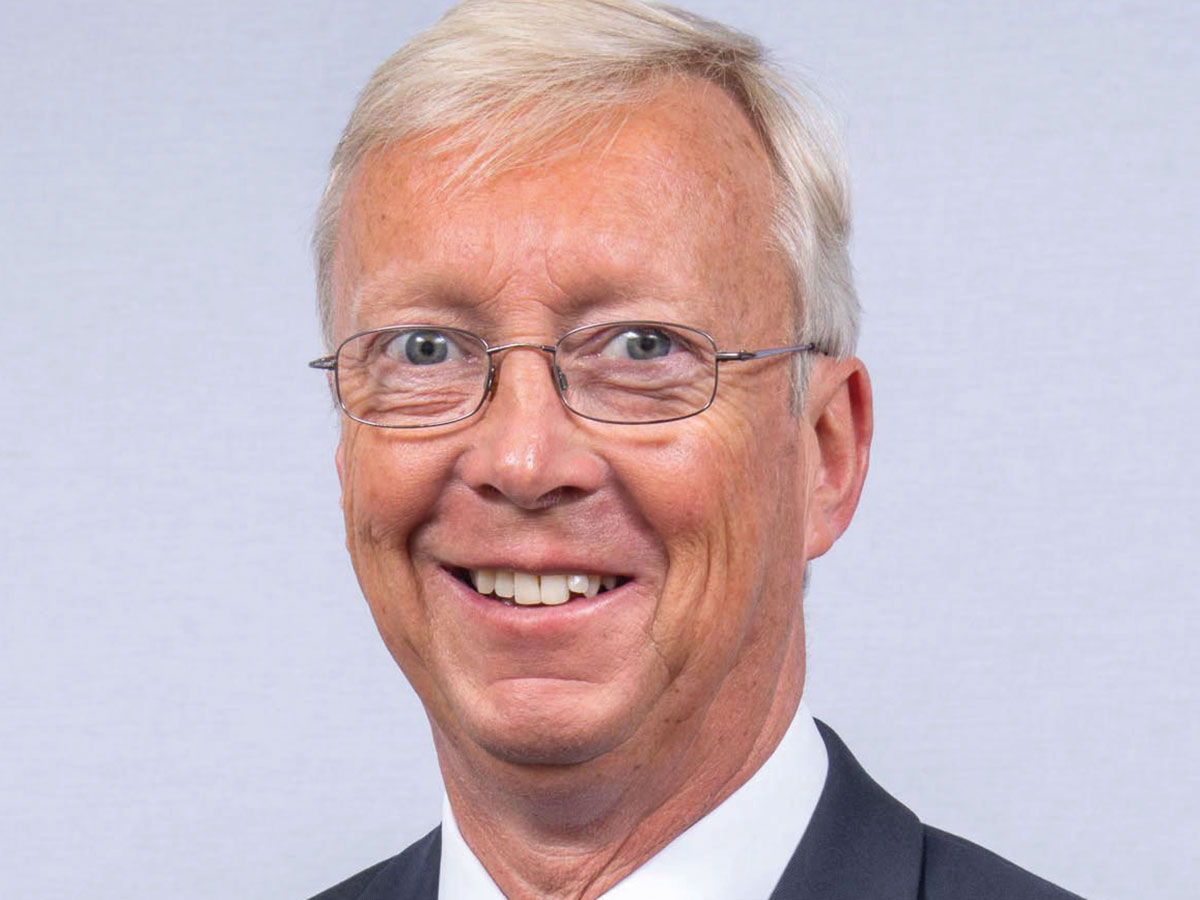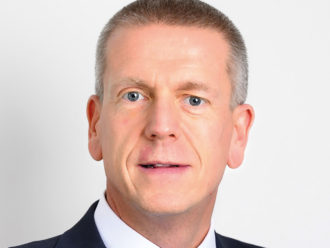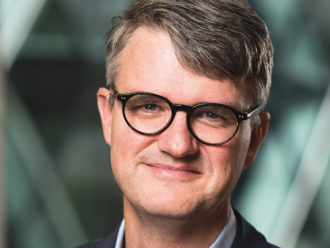Gordon Ross, chief investment officer at LGPS Central, has had to face many challenges posed by the pandemic in his first year in the job. But, despite this, he tells Andrew Holt it has been a case of business as usual.
You became chief investment officer of LGPS Central during the global pandemic in spring last year. How has the first year been?
It has been very busy. We have had to make sure everything functions, with people being remote in one shape or form. We were lucky though, because ironically, we undertook an in-depth disaster recovery process in January 2020. So, we were prepared for this – if, anyone can be prepared.
And despite the lockdown we have launched some funds: undertook the procurement of managers, did the due diligence and then the transition to those managers. All of that despite not being in the office – it has not stopped business. And our partner funds interests have been maintained through it all.
I am proud of the teams because we are a young company. Prior to the first lockdown, we recruited 10 people and they, as yet, have not been to office. But we have been able to integrate them into the business.
What particular challenges have there been?
The challenges have been process driven. They are the remote working challenges – to make sure you have good access to people. And connected to this, to keep stay informed and make sure they are okay. So essentially, ensuring everyone is working well together.
Like most pension funds you reported considerable losses in March 2020. Have you recovered from this episode?
For the funds that were externally managed, it was a modest period. But as we know now, the performance of the equity markets is back up to pre-pandemic highs and, until the end of February, yields were as low as they have been. So, it was a market-to-market concern in one quarter, rather than a loss taken.
Most active managers have benchmarks, and they are down, but the mandate is to beat the benchmark – so providing they are beating the benchmark they are doing what they should be doing.
So yes, there were losses, but they were not necessarily realised losses. Our clients are active defined benefit (DB) schemes, long-term investors, they allocate to various sectors on a strategic basis. It was more noise in the markets than realised losses.
The godsend from a market point of view was central banks throwing everything at the situation. They have learnt from 2008. This was not a financial problem – it was an economic problem – because they were shutting economies down.
Have you changed your broader asset allocation and investment strategy as a result of the pandemic?
The partner funds do the asset allocation. We design products that will suit that allocation. The only theme that has come out of this is the fact that sustainability, ESG integration and corporate governance have gone higher up everyone’s agenda. We believe in engagement not divestment – you can make company boards listen to you and improve on an ESG basis by being engaged. The thing the pandemic did is bring the ‘S’ – the social part of ESG – back into focus.
Which asset classes are being internally managed and what have you chosen to outsource?
Most of our money is outsourced, but we are unique in that we are the only pool that runs passive equities in-house. We have five passive funds managed in-house: the UK Passive Equities fund, the Global (Ex UK) Passive Equities fund, the Global Passive Equities Dividend Growth fund, an All World Passive Equities Climate Factor fund and the Global Multi Factor fund. The partner funds decide which funds and asset classes they want to meet their liabilities and pay their scheme members – we provide the funds they want.
We have five active funds managed by external managers: Emerging Markets Active Equities, Global Active Equities, Global Investment Grade Corporate Bond, Global Active Emerging Market Bond and the recently launched Multi-Asset Credit Fund. Again, the partner funds decide the funds they want and we provide them. If we do not have the ability to run funds in-house we will search for external managers.
We also manage a discretionary gilt fund on behalf of one of the partner funds in-house, though this is segregated and not pooled.
ESG is common sense investing. One that investors have been doing for ages: but it has now become more refined, because there are more identifiable mistakes that companies make.
Besides CIO, you are also head of fixed income at LGPS Central. Can you tell us about how the Emerging Market Bond fund the pool launched earlier this year ties into your broader fixed income strategy?
One of the big purposes of a pool is to aggregate demand and get something far more economical, because you are a bigger investor. The methodology and the procedures we go through, refining the process and products to make sure it is what they want. Then we go out and choose the managers.
We started the Emerging Market Bond fund manager search in June and July of 2020. It is a stringent process. We narrowed the field down prior to being shutdown – and we would always do the last part, which is physical due diligence, by going to their offices and ask about their strategy: how is risk controlled? Who do you work with? Those sorts of things. But we had to do that via TEAMS. This was completed on 18 September, so was done under Covid conditions, and has proved highly successful.
Emerging market debt continues to be a good diversifier to more traditional developed fixed income markets given the choice of local and hard currency markets and the relative pick-up in yield as well as a general underweight allocation to the asset class. The prospect for developed market economies to rebound as the vaccines battle the pandemic should lead to an increase in demand for commodities, many imported from emerging countries.
Despite well publicised defaults and restructuring that took place during 2020 [Argentina and Ecuador], there remain attractive opportunities with many emerging market markets offering higher quality [by credit rating] investments in local currency terms than in US dollars.
What are the main risks and opportunities investors in emerging markets should consider?
Many of the risks are similar to those evident in developed markets, but the sensitivities and consequences can be more extreme. Emerging markets are more sensitive to political risk given some of the regimes are either military rule or the democratic process is not as robust, often both.
Default risk at a national level is also heightened in emerging market countries as some face a large domestic fiscal funding need as well as an increasing external funding pressure. These can be mitigated through detailed and rigorous analysis to identify such vulnerabilities. The advantages for emerging market debt exposure I have, in part, mentioned. Additional benefits are the low correlation to some other fixed income asset classes – loans and certain high yield – and the ability to choose from the local currency or US dollar-based allocations to emerging market debt.
Talking about fixed income more broadly, are you concerned about the risk of negative interest rates in the UK?
The UK has the experience of watching the effects of negative interest rates: you have had it in Japan and throughout Europe, and it has worked quite well. The difficulty is how do you get out of it? Central banks see it as a last resort, if all things fail, because to turn it back is more difficult.
There are all sorts of consequences with negative rates and the challenge is getting out. And, as yet, nobody knows what is going to happen. Am I worried about them going negative? No. Because I do not think it is going to happen. And there will be enough telegraphing to think about the consequences.
As an open DB fund, you still have a high allocation to equities. How sustainable is the bounce back of share prices we saw last year, given that many underlying businesses are struggling?
It is the long-term focus that is important here. And there needs to be diversification. Just being in the sterling market is putting all your eggs into one basket, for example. There is a need to try and get a balance of equities, fixed income and any specialist areas.
So, from an asset allocation point of view, all funds will have that diversification: it is about how do they want to approach it? What is their risk profile? How can they achieve a balance? What is their timeframe? It comes down to that actuarial evaluation.
How are you integrating ESG criteria into your portfolio?
It is important. One of the discussions early on between ourselves and the partner funds was how do we want to represent them? We decided we wanted to engage with companies, not divest from them. If you divest, you sacrifice your seat at the top table. So, we choose ESG-related themes we represent and push for across various companies.
One important thing you have to keep in mind about ESG is that it is not just lip service. Ask companies: are you doing exactly what you say you are doing? Is it embedded into everything you do? Can you show us how?
ESG is common sense investing. One that investors have been doing for ages: but it has now become more refined, because there are more identifiable mistakes that companies make.
Also, our analysis shows that if you look at the more sustainable companies, their performance is better, because they are becoming efficient – and efficiency and sustainability often work together. You often get better results, along with the appropriate salary levels and better board controls. So, the governance part of ESG, the governance structure of a company, is an important part of an ESG strategy.
One important thing you have to keep in mind about ESG is that it is not just lip service.
What is your outlook for the UK and global economy in the next year?
It is all about central banks. Tell me what central bank rates will be next year, and I will tell you where the markets will be. There is so much liquidity, that central banks have been happy for the market to think about inflation and getting a more normalised yield curve in fixed income markets.
You have seen yields back up, but that brings with it its own problems, because of the loss of financing done off long term rather short-term rates. So, a lot of it is around liquidity, central bank action. When we all can get fully unlocked and have the vaccinations – but this is getting pushed back is some areas, in Europe, for example, with more lock- downs – we can then look at the numbers. But I do not think the markets will know what to do until we know where the economies are.
The big problem is unemployment. Central banks are focused on inflation, but unemployment is going to be a bigger problem. I cannot, overall, see rates much higher than they are now in a year’s time. Are we at a growth to value exchange? Where it goes to value for 18 months, then goes back to a growth cycle? That is one question. But it is all about what the central banks do.




